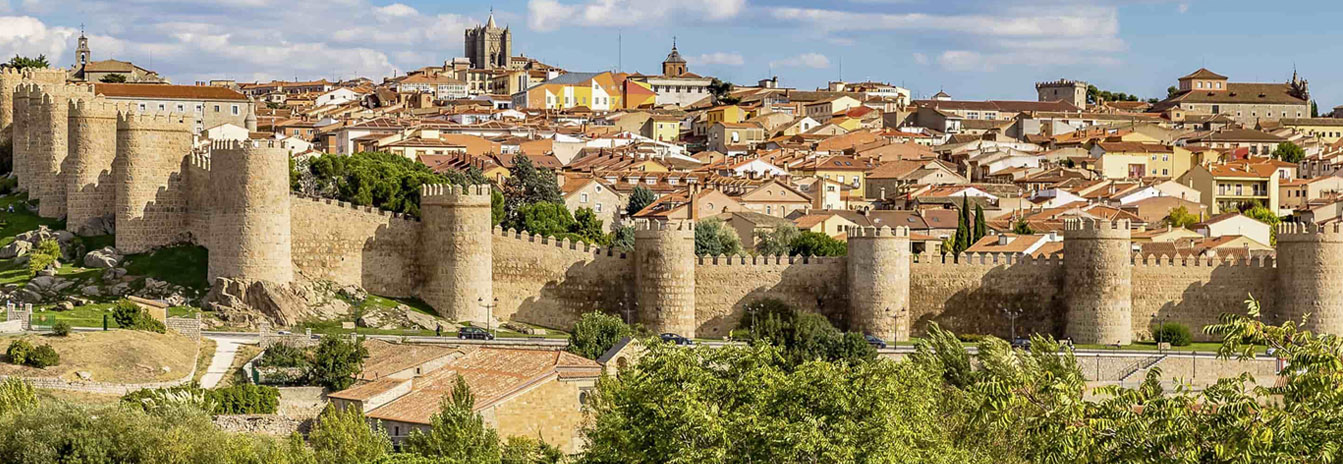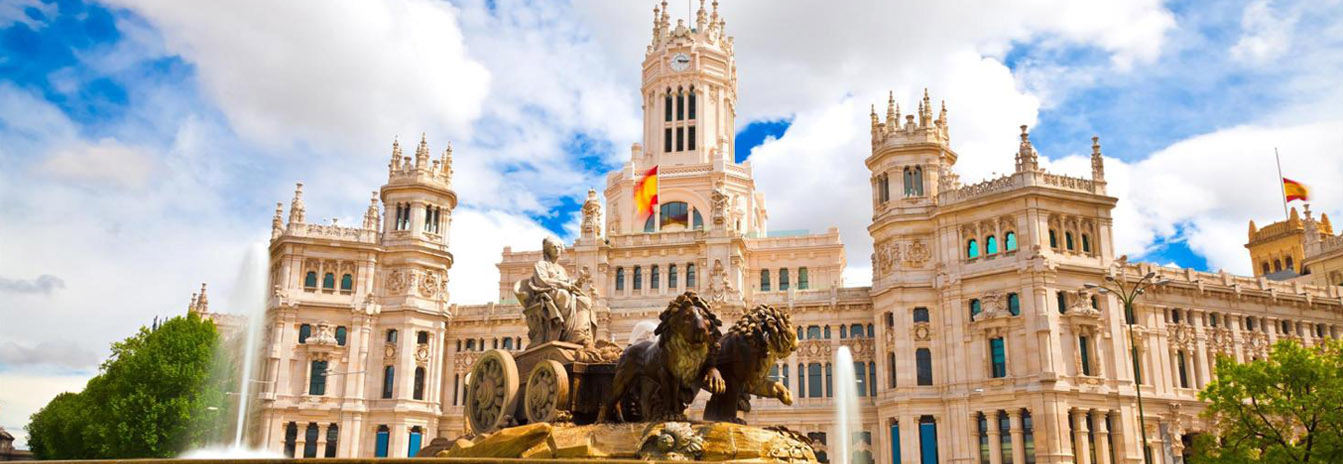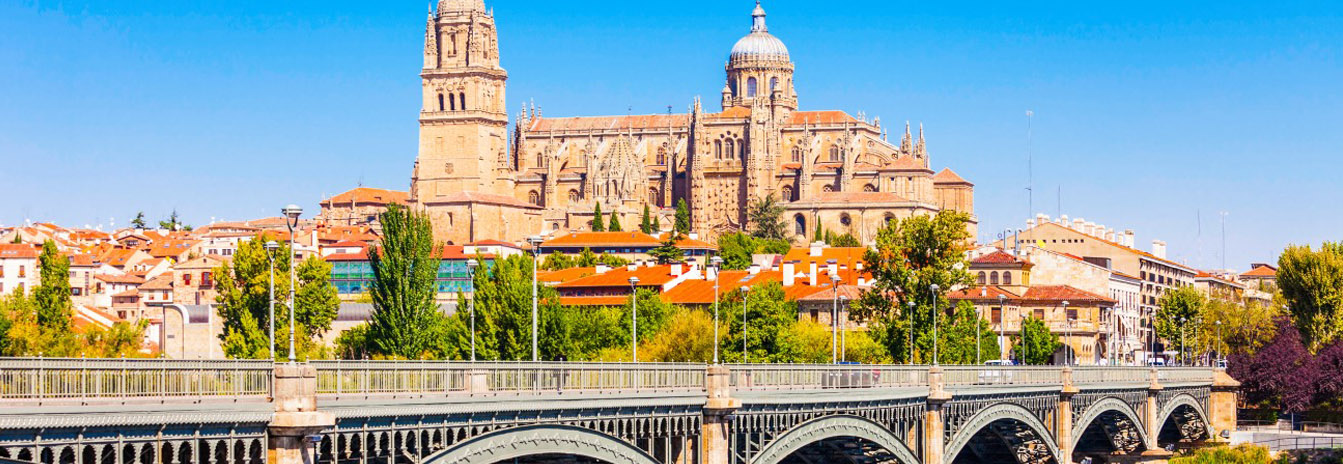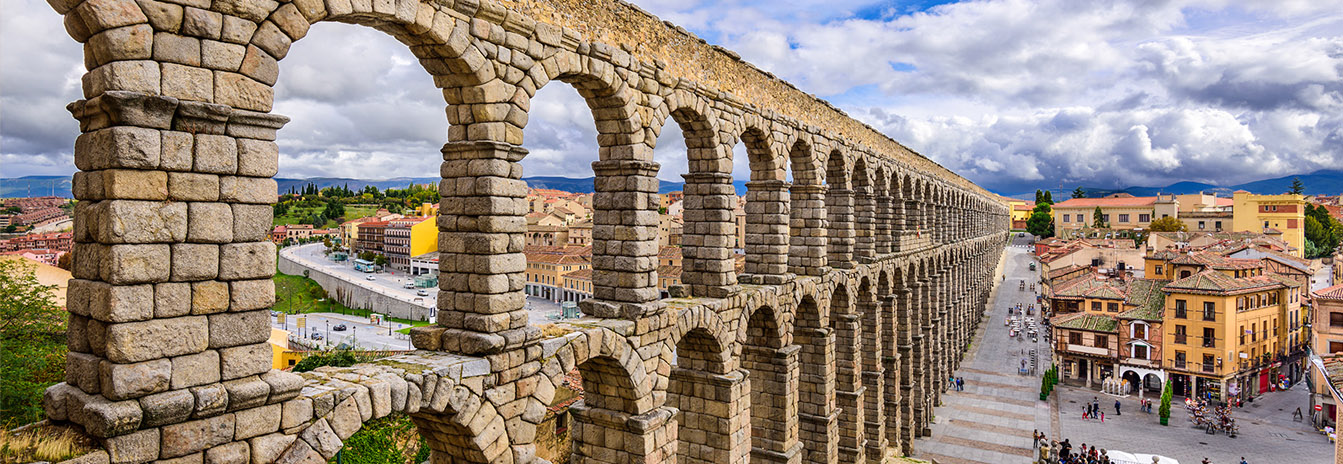The forging of Castile and León could not be understood without the contribution of its monasteries and convents. Even today these sites continue to offer an insightful glimpse into the evolution of monastic life, from the first Visigoth hermits to its culmination in Baroque mysticism. The entire range of religious orders still keep alive works of art that speak to us about their role in colonization and politics, their monarchical and university ties, their influence on the lives of the founders and reformers, and their involvement in rural and urban life.
Day 1 Arrival in Madrid and transfer to Segovia for overnight.
Day 2 A morning visit to the walled precincts of Segovia will keep us busy as we wander from the Roman aqueduct, passing by the Gothic Cathedral, to the medieval citadel El Alcázar. We will finish with a walk through the Jewish Quarters. The evening will find us in the outer city convents: the sanctuary of Fuencisla, the Convent of the Carmelite order with the tomb of St. John of the Cross, creator of the Discalced Carmelites, the church of Vera Cruz and the Hieronymites monastery of El Parral.
Overnight in Segovia Possibility of celebrating or attending Holy Mass.
Day 3 The road from Segovia to Burgos is marked by important sites of Castile: the ravines of the Duratón River with the Romanesque Hermitage of St. Frutos, and the caves of other Visigoth hermits from the area, the chivalric Sepúlveda and Caleruega -home of the founder of the Dominican Order, St. Domingo de Guzmán-. Another saint of the same name will bid us to become familiar with a major work of Romanesque sculpture, the cloister of the Benedictine Convent of Santo Domingo de Silos.
Overnight in Burgos.
Day 4 Standing at the Renaissance gate of Santa María, Burgos welcomes us with its tale of the origins of Castile, with special reference to the historical figure named El Cid. We will visit the Cathedral, an outstanding example of Gothic architecture, and a World Heritage site. A walk through the city will take us to the Casa del Cordón, the Plaza Mayor, the Paseo del Espolón promenade, and the Consulate. Possibility of celebrating or attending Holy Mass In the outskirts of Burgos we will visit two of its greatest monuments: the Cistercian monastery of Las Huelgas, a royal pantheon from the 13th century; and the Cartuja de Miraflores, church and burial place for the parents of Isabel the Catholic, queen of Castile.
Continue to Valladolid for overnight.
Day 5 In Valladolid, we will visit San Gregorio, home of the National Sculpture Museum, the Palace of Los Pimentel, the unfinished cathedral, the royal convent of San Benito -main office of the Castilian Benedictines- and the Plaza Mayor. We will also visit the University’s Santa Cruz College. Tordesillas is known for the Royal Convent of Santa Clara, most interesting for the Mudéjar images it evokes. The old shopping district of Medina del Campo stands out for its castle, the enormous Plaza de las Ferias, and its aristocratic homes. Following a brief walk through Fontíveros to visit the home of St. John of the Cross, we arrive in Alba de Tormes, where Teresa of Ávila died and was buried, her memory preserved by the Discalced Carmelites.
Travel to Salamanca for overnight.
Day 6 The lovely city of Salamanca centers on the University which preserves its historical building and many colleges, notwithstanding the various religious orders, notably the Dominican order with their Convent of St. Steven, and the monumental college run by the Jesuits. The homogenous mix between students and visitors beckons us to walk along the lively streets and indulge in the festive evening atmosphere. Among the more significant monuments are the Plaza Mayor, the two Cathedrals, the House of Shells and the very interesting Casa Lis, home of the Art Déco and Art Nouveau Museum.
Overnight in Salamanca
Day 7 Ávila welcomes us with its impressive city wall, its Cathedral, St. Vincent’s Basilica, medieval palaces and large homes belonging to Velada, Valderrábanos, Núñez Vela and Guzmanes. But no road can ignore the life and work of the great mystic St. Teresa of Ávila, evidenced in both the Carmelite Monastery of the Incarnation and the home of her birth. The Isabelline Convent of St. Thomas introduces us to part of the Dominican ideology, the Inquisition.
Possibility of celebrating or attending Holy Mass
Possibility of organizing a special farewell dinner Overnight in Ávila
Day 8 Drive to Madrid, where we will enjoy a panoramic tour before the transfer to the Airport
MYSTICISM IN CASTILE AND LEÓN 8 DAYS:
- Day 1 MADRID – SEGOVIA
- Day 2 SEGOVIA
- Day 3 SEGOVIA – SILOS – BURGOS
- Day 4 BURGOS – VALLADOLID
- Day 5 VALLADOLID – FONTÍVEROS – ALBA – SALAMANCA
- Day 6 SALAMANCA
- Day 7 SALAMANCA – ÁVILA
- Day 8 ÁVILA – MADRID
 |
 |
 |





